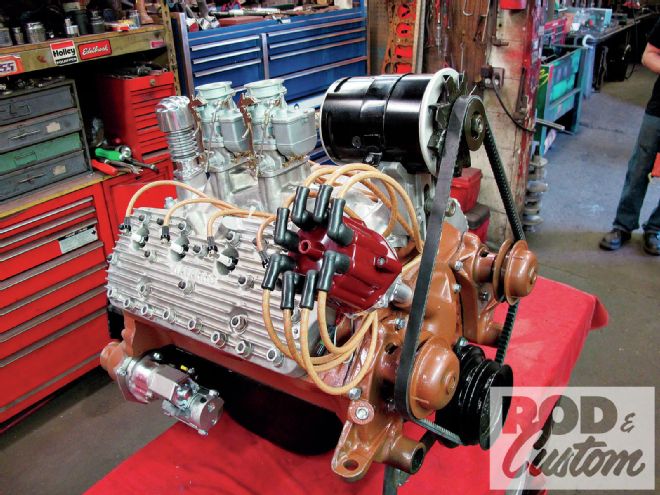
After last month’s crash course on Flatheads, I not only learned quite a bit myself, but earned a new respect for an engine I’d otherwise cared little about up until now. I’ll admit that previously basing my negative opinion toward Flatheads on the two bad experiences I’d had (mainly due to overheating issues) wasn’t fair—especially considering the fact I never attempted to figure out the problems, let alone fix them. But that was then … this is now.
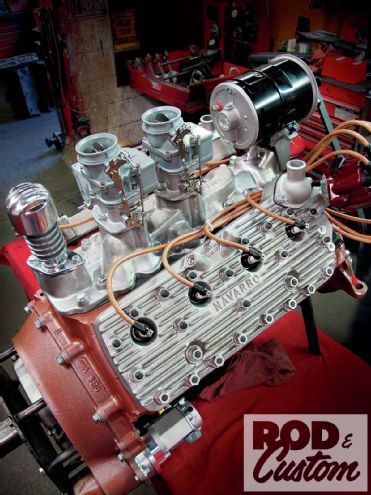
Now, with my new appreciation and an unbiased attitude, I was ready to give the Flatty one more chance. Fortunately, the odds were in my favor seeing as I wasn’t going it alone—actually, I did more observing (and mental note gathering) than anything else, as H&H Flatheads did all the work. And through my observations, while doing my best not to annoy Mike Herman too much, I ended up learning even more (and I’m sure Mike did too—like how much longer it takes to build a motor with me looking over his shoulder pestering him the entire time!).
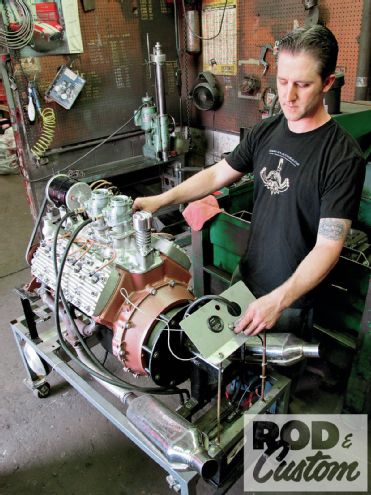
As previously mentioned, we ended up going with an 8BA rather than an earlier model. Period correctness was not as important as performance and reliability, both of which the ’49-53 engines offer the most of. The block and many of the parts that are either not available in the aftermarket or just better in OE nature (oil pan and flywheel for instance) were obtained from H&H’s bone yard. Speedway Motors supplied a majority of internals (Arias 3 5/16-inch pistons; Isky Max-1 cam; hollow-body adjustable lifters, stainless valves, etc; the 4 1/8-inch stroker crank was sourced directly from Scat) as well as a pair of their 9Super7 carburetors, MSD provided a ready-to-run electronic ignition, and Summit Racing was the source for the PowerGen alternator and Powermaster XS Torque gear-reduction starter, the latter of which must be used for the forthcoming Tremec five-speed conversion. The crowning aspect, of course, is the pair of the Navarro 8BA heads, which feature Navarro’s proprietary horseshoe-shaped chambers (improved flow), and Navarro dual-intake manifold.
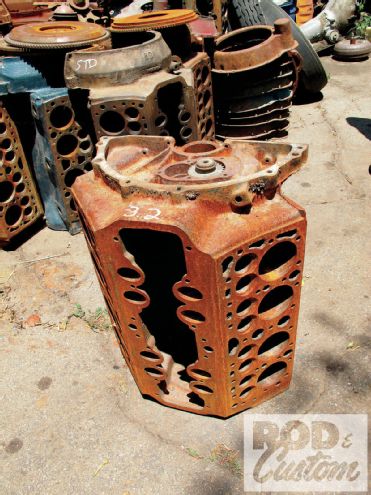 As mentioned, both here and in the previous installment, we’ll be using Ford’s last variation of its Flathead V-8, the ’49-53 8BA. In lieu of adhering to any stringent period correctness, performance (better ignition and oiling) and reliability (better cooling) dictated this choice. Also, the lack of an integral bellhousing was also preferred as it will make adapting a Tremec TKO 500 easier.
As mentioned, both here and in the previous installment, we’ll be using Ford’s last variation of its Flathead V-8, the ’49-53 8BA. In lieu of adhering to any stringent period correctness, performance (better ignition and oiling) and reliability (better cooling) dictated this choice. Also, the lack of an integral bellhousing was also preferred as it will make adapting a Tremec TKO 500 easier.
Prior to any machining or assembly, Mike prepped the block, first by hot-tanking followed by magnafluxing to identify any initial cracks. Next, the cleaned block is sent out for an acid dip, which helps further rid any remaining core sand and rust. Once returned, it’s again checked for cracks and repairs performed, if necessary, with interlocking, tapered pins or sleeves, depending on the area. Next is another of H&H’s trick preventative measures: pressure-sealing the block and injecting cast-iron resin into the internal passages. This literally seals the areas most prone to be a leading cause of overheating. Now that all the prepping is complete, machining commences.
After new, hardened stainless valve seats have been installed, Mike does a traditional three-angle relief and then repairs any stripped-out head boltholes with helicoils before line-boring the block. The ensuing machining entails surfacing intake/cylinder decks, honing cylinders, and drilling out lifter bores. Once all the holes have been poked, the block goes in for another hot tanking to remove debris before assembly begins.
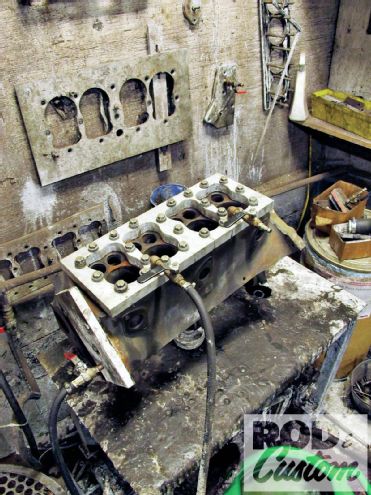 Once it’s been cleaned and any repairs made (sleeving cylinders, pinning cracks), all blocks go on the pressure sealer at H&H. This procedure pumps a cast-iron resin through the block at 180 degrees and 20 pounds of pressure for 30 minutes on each side and then its left to cure overnight.
Once it’s been cleaned and any repairs made (sleeving cylinders, pinning cracks), all blocks go on the pressure sealer at H&H. This procedure pumps a cast-iron resin through the block at 180 degrees and 20 pounds of pressure for 30 minutes on each side and then its left to cure overnight.
There’s no real rocket science behind putting together a Flathead long-block, but of course there are right and wrong ways to go about certain aspects—just as there are varying opinions on exactly how to go about those certain aspects the right way. H&H has developed its own formula for building good-running, reliable engines. A big part of that success is due to the precise balancing of cranks and flywheel assemblies Mike achieves using a brand-new, state-of-the-art Hines digital balancer. With this he can zero-balance complete rotating assemblies with pinpoint accuracy. Of course, you gotta have decent crankshafts and flywheels to begin with, something H&H is fairly well stocked up on, not to mention having a resource like Scat nearby whenever the need arises for a quality stroker crank, like now.
Before any parts are installed, the block is once again thoroughly cleaned. Then, starting with the cam and finishing up with the timing gears, the motor’s assembled to factory specs … or better, if possible. Along with using the right combination of parts, to further ensure not only our Flathead here, but each and every turnkey engine that leaves H&H is test-run and fine-tuned so that it is indeed a turnkey runner once the owner receives it. (Mike also has a secret procedure he performs during testing that goes one step further in ensuring his motors run cool and stay dry!)
You’ll notice that we avoided going the glitzy route with polished heads/intake, deburred and smoothed block, and chrome whatnot, instead opting for as-cast and painted parts and accessories. This was done in an effort to keep costs down, but also to go with the intended finish style of the Tudor sedan it’s going in. That said, H&H is not afraid to take any Flathead to the 9s, including Ardun overhead conversions and S.Co.T. blower kits. For the ’33, a pair of two-barrels will be plenty sufficient go-wise, and a coat of ’49-53 Ford Bronze will more than suffice show-wise. What really matters when it comes down to it—it doesn’t boil, it doesn’t smoke, everything’s tight, and it has that undeniable sound only a Flathead V-8 can make. And that’s exactly what we ended up with here.